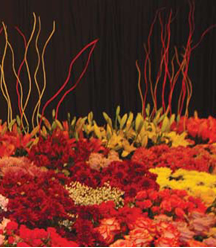 This year’s Valentines Day and mother’s Day million’s of consumer’s bought flowers. It’s peak for florists, anticipating to bring billions of dollars to the floral market.
This year’s Valentines Day and mother’s Day million’s of consumer’s bought flowers. It’s peak for florists, anticipating to bring billions of dollars to the floral market.
While it’s easy for customers to pick up flowers at the local grocery store, florist shop or to seamlessly order arrangements online, not surprisingly there’s up to a year of forecasting and planning for what one representative from online flower delivery company calls a “last-minute holiday.”
Don’t underestimate the importance of these days to the floral industry. The biggest floral holidays are Valentine’s Day and Mother’s Day, but Valentine’s Day is a big percentage of yearly sales.
High volume, perishable products, fickle winter weather and long transportation routes means that the supply chain must be working smoothly to get the fresh flowers in the customers’ hands at the right time.
The cold chain
Lovebirds around the world can thank the cold chain for allowing them to adorn their tables with blooming buds every February, and actually all year round. That’s because most of the flowers sold come from abroad. The main domestic floral producers, accounts for only a small percentage of the flowers, though these flowers too must be maintained in the proper environment for quality purposes. The rest of the flowers primarily come from South America and Africa.

 IFTEX has traditionally been a very popular exhibition to market your products, services and business. With advances in social media marketing and Internet technology, like webinars, Google hangouts and video conferencing, the value and benefits of marketing via trade fair comes up. Though technology is changing marketing at a rapid pace, there are several benefits from having exhibit presence at a trade show. These six key benefits are why your business must have IFTEX Exhibition marketing presence:
IFTEX has traditionally been a very popular exhibition to market your products, services and business. With advances in social media marketing and Internet technology, like webinars, Google hangouts and video conferencing, the value and benefits of marketing via trade fair comes up. Though technology is changing marketing at a rapid pace, there are several benefits from having exhibit presence at a trade show. These six key benefits are why your business must have IFTEX Exhibition marketing presence: Why are omnichannel retailers suddenly taking an interest in automating their warehouses? Until very recently the retail sector had tended to shy away from making such investments, preferring instead to take on a large labour force to manually process orders. However, that thinking appears to be changing – and rapidly so.
Why are omnichannel retailers suddenly taking an interest in automating their warehouses? Until very recently the retail sector had tended to shy away from making such investments, preferring instead to take on a large labour force to manually process orders. However, that thinking appears to be changing – and rapidly so.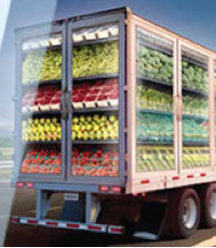
 What is Sivanto Prime?
What is Sivanto Prime?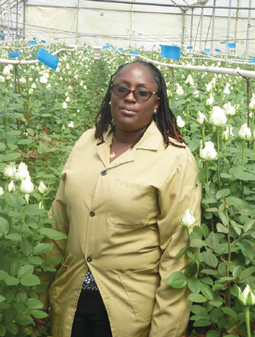 What spurred you into growing? Any role model who inspired you?
What spurred you into growing? Any role model who inspired you? 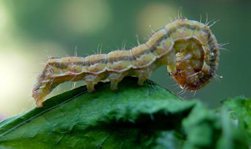 Caterpillars are seasonal pests to the flowers but when in season result in major losses to the flower industry as one caterpillar can cause damage to more than one flower. In flowers there are different kinds of caterpillar species which include helicoverpa armigera and spodopteraexigua and thus it’s important to know the exact pest that one has in their crop and out of these two, the helicoverpa species is the notorious and listed as a notifiable pest in the European market.
Caterpillars are seasonal pests to the flowers but when in season result in major losses to the flower industry as one caterpillar can cause damage to more than one flower. In flowers there are different kinds of caterpillar species which include helicoverpa armigera and spodopteraexigua and thus it’s important to know the exact pest that one has in their crop and out of these two, the helicoverpa species is the notorious and listed as a notifiable pest in the European market. Kenyan vegetable growers are organized into either large group farms, single farms or out growers who produce for export companies under contract. The latter have to follow rules put in place by the contacting company. This is to ensure that homogeneity and food safety standards are met to the satisfaction of the produce’s end user.
Kenyan vegetable growers are organized into either large group farms, single farms or out growers who produce for export companies under contract. The latter have to follow rules put in place by the contacting company. This is to ensure that homogeneity and food safety standards are met to the satisfaction of the produce’s end user.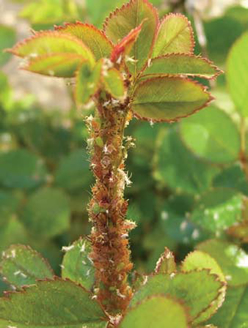 After climbing one great hill, one only realizes that there are many more mountains to climb’. This old adage attributed to one of African greats rings true in thrips management.
After climbing one great hill, one only realizes that there are many more mountains to climb’. This old adage attributed to one of African greats rings true in thrips management.